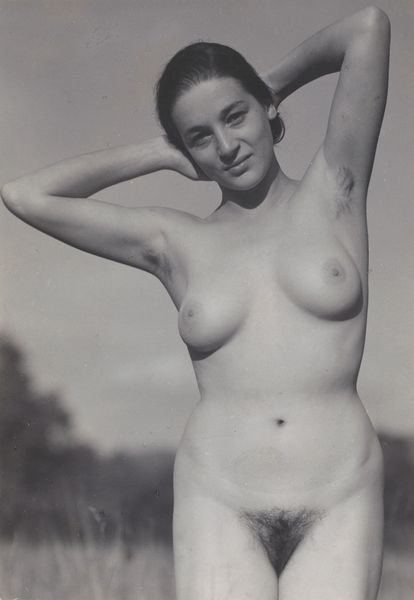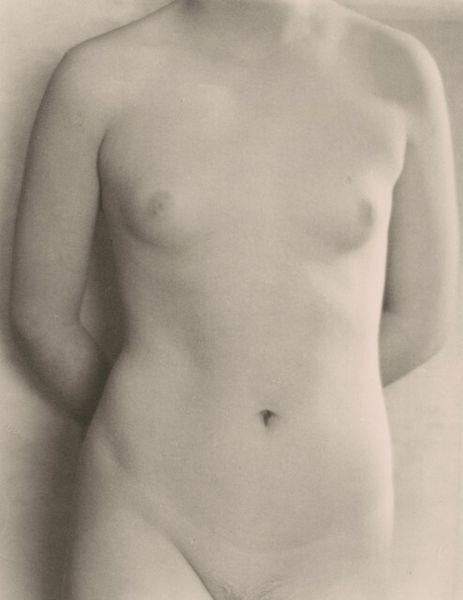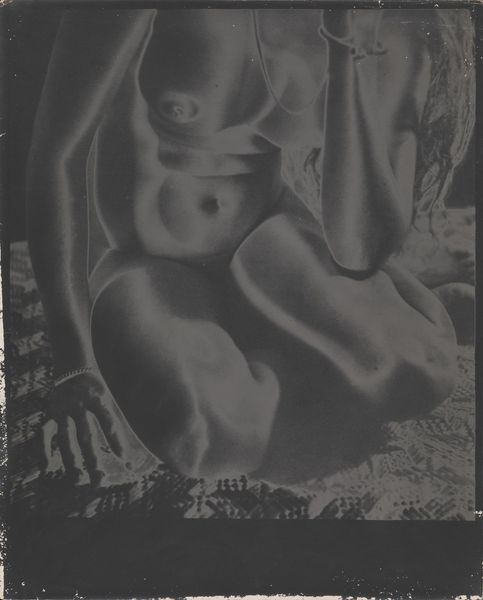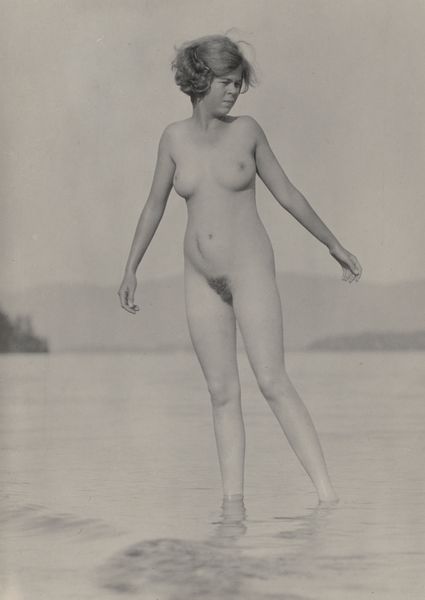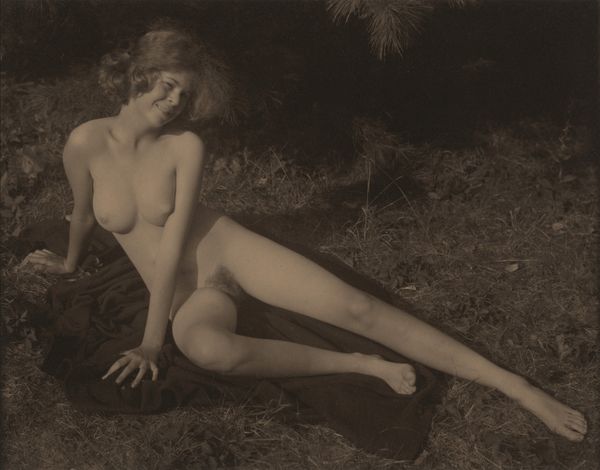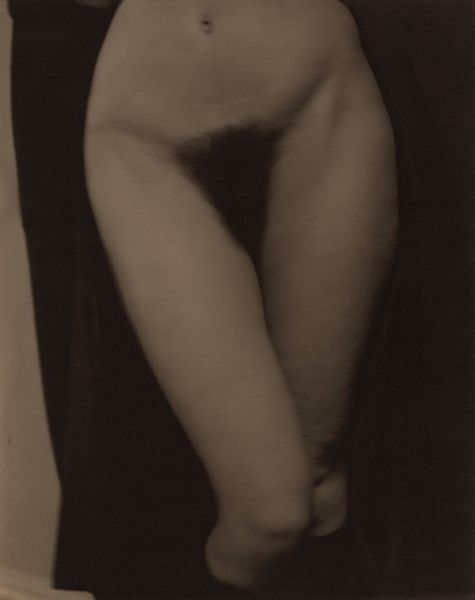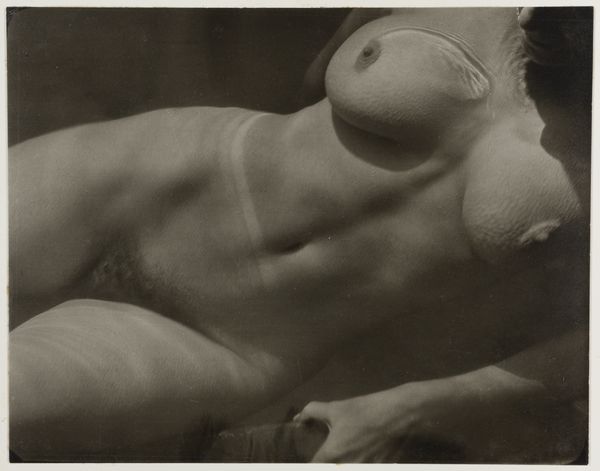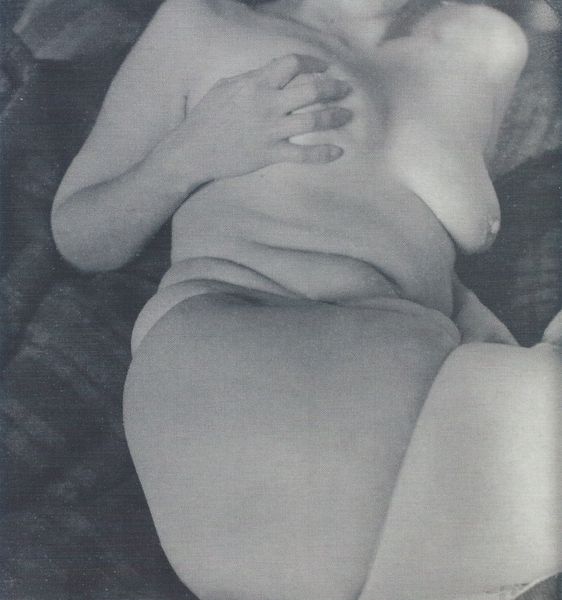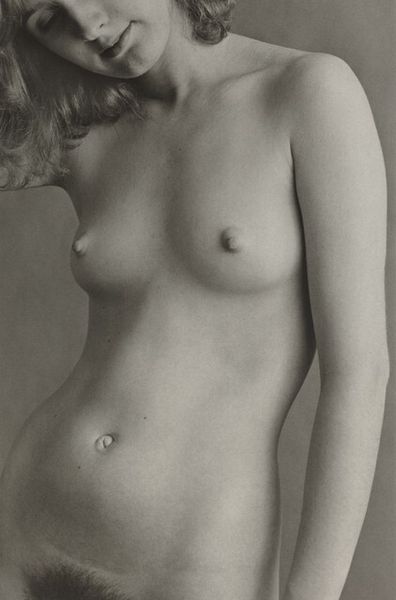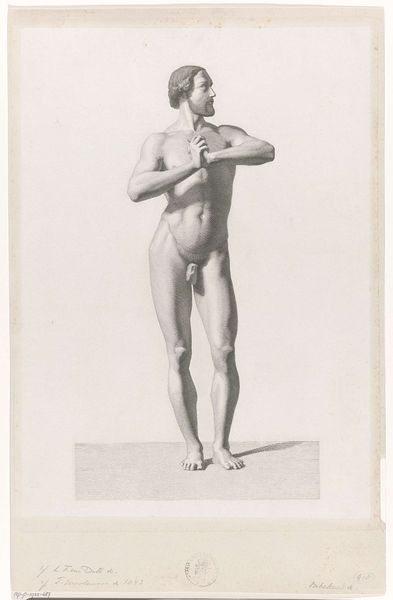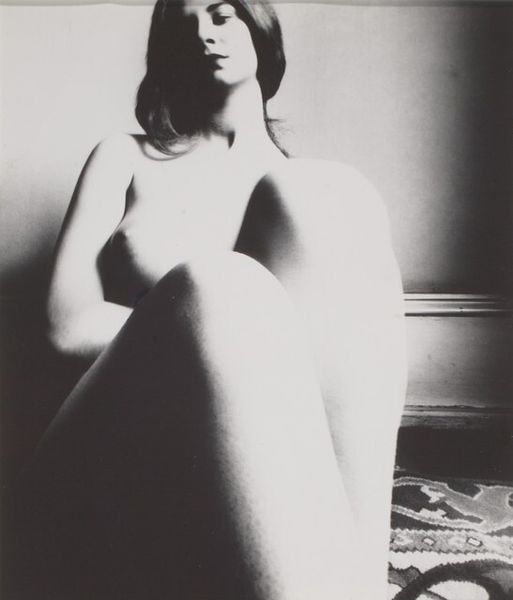
photography, gelatin-silver-print
#
portrait
#
displayed
#
self-portrait
#
black and white photography
#
pictorialism
#
photography
#
gelatin-silver-print
#
monochrome photography
#
monochrome
#
nude
#
modernism
#
erotic-art
#
monochrome
Dimensions: sheet (trimmed to image): 11.8 x 9 cm (4 5/8 x 3 9/16 in.) mount: 34.2 x 27.2 cm (13 7/16 x 10 11/16 in.)
Copyright: National Gallery of Art: CC0 1.0
Curator: Here we have Alfred Stieglitz’s gelatin silver print, “Frances O'Brien,” from 1926. It is a nude portrait. Editor: Stark. Direct. There's a vulnerability in the upward gaze that's quite compelling. It’s as if she is offering herself up, unapologetically. Curator: Stieglitz, through his gallery "An American Place", consistently challenged societal norms. His work in photography aimed to have the same status and recognition of the paintings, therefore moving the discipline of photography into modern art discourse. Editor: It’s interesting how the material and process itself contributes to the subject's vulnerability. The grayscale, the graininess... it’s honest, revealing every contour. Curator: Absolutely. This photograph of Frances must be seen as an intervention into the male dominated perspective of women. Her directness, breaking with the classic art history representation. Her own sense of self is present. Editor: It's not just the composition, but the inherent qualities of gelatin silver print itself. The texture invites touch but its final form remains distanced and two-dimensional. Curator: Her nudity, and specifically how he depicts it, can be provocative even now. It surely was shocking for its time. A statement within a culture that constantly wants to tame feminine bodies. Editor: Right, a statement manufactured from labor, chemical, and social negotiations! And that, in itself, transforms our interaction and view on gender dynamics then, and how little things have changed, decades later. Curator: The photo participates of a bigger discourse regarding the artist representation of women. Stieglitz aimed to offer another vision for a very masculine scene. Editor: Exactly. Even today, the photograph acts as an important commentary. It allows us to inspect, question, and discuss production and representation with every viewing. Curator: Truly a seminal work with endless layers for interpretation. Editor: Agreed. Every inspection reveals not just the subject, but the labor that produces a specific type of vision of her and her time.
Comments
No comments
Be the first to comment and join the conversation on the ultimate creative platform.
